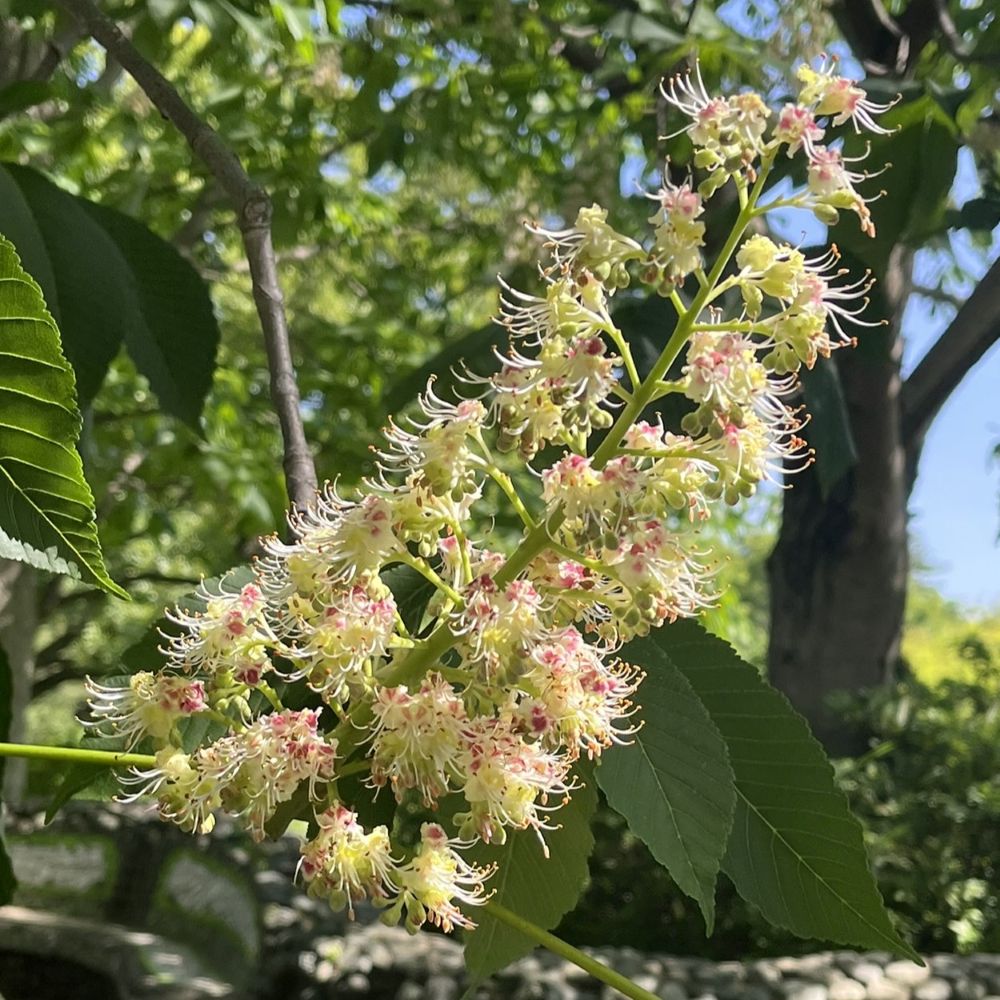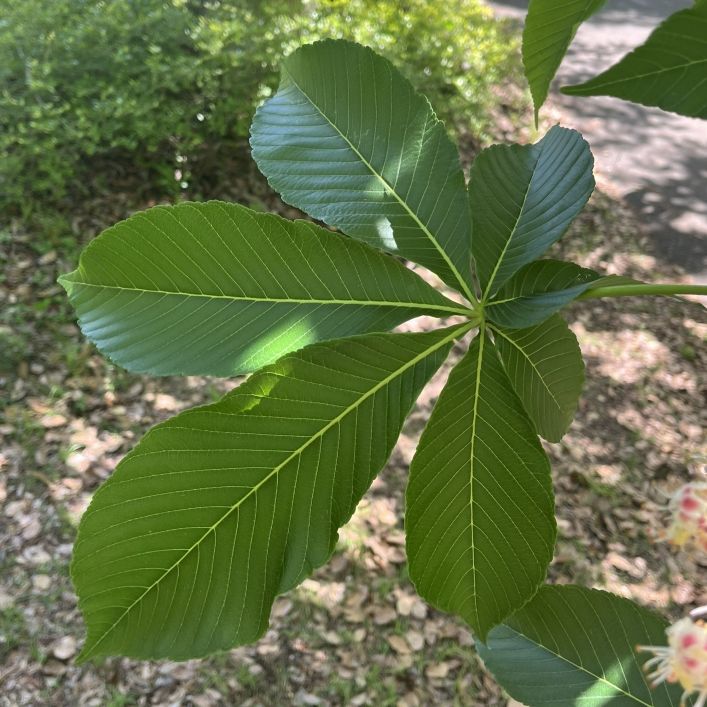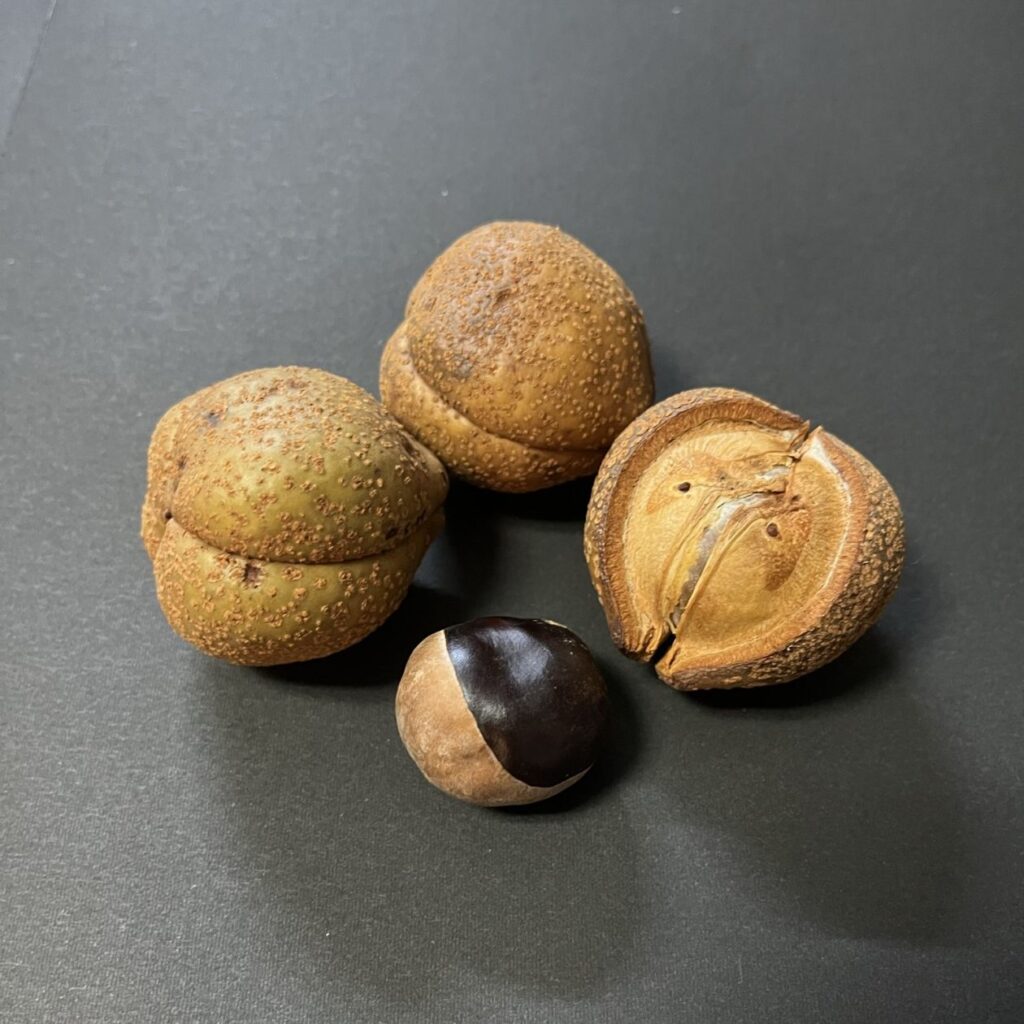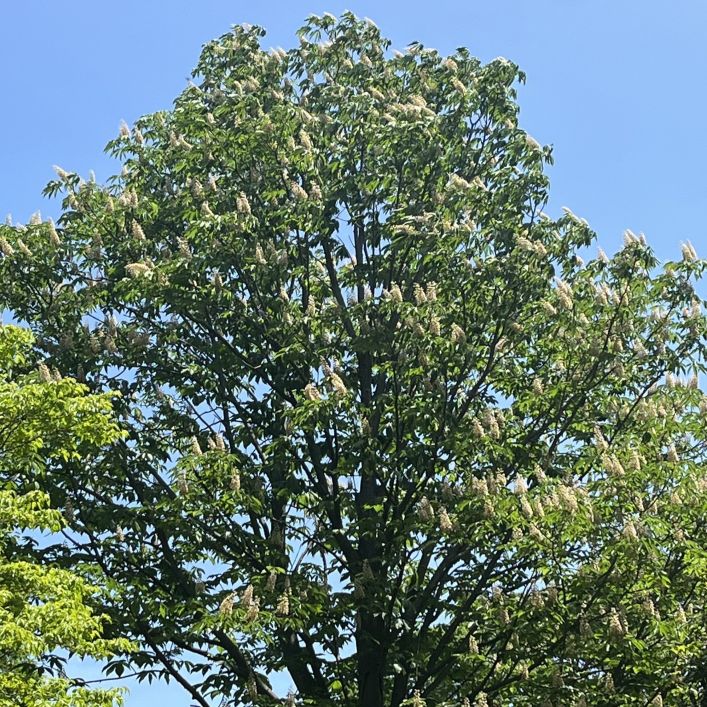トチノキの花は仄かに甘く香り、たくさんの蜂蜜が採れます。淡褐色の蒴果を結び、濃褐色の種子が露出。種子は灰汁抜きして食べられます。
The flowers of the Japanese Horse Chestnut have a sweet fragrance and produce a lot of honey. After flowering, the plant produces a light brown capsule, exposing the dark brown seeds. The seeds can be eaten after removing the bitterness.
【仮名】トチノキ
【和名】栃の木
【英名】Japanese Horse Chestnut
【学名】Aesculus turbinata
【誕生】05/ 10
【開花】05, 06月
【花色】White
トチノキ
トチノキの概要

トチノキはムクロジ科の落葉高木です。北海道から九州まで分布し、山地の沢沿いなど、水分が多く、肥沃なところで自生。有用樹として昔から親しまれ、北海道ではアイヌの人々によって「トチ」「トチニ」、東北では「トジ」「トヅ」など、各地で同じような名前で呼ばれました。
トチノキの名前

トチノキの和名の由来は、たくさんの実が成るから「十千」、なかなか実が裂けないから「綴じ」など、諸説あります。ラテン語の属名アエスクルスは「食べる」という意味で、実が食料や飼料に用いられたから。種小名タービナータは「倒円錐形の」という意味で花序に由来します。
トチノキの姿形

トチノキの樹皮は若木で平滑、老木で剥離。葉は小葉5~9枚の掌状複葉で対生し、縁に鋸歯があります。花は上向きの円錐花序で上方に雄花、下方に両性花。花弁が4枚、雄しべが7本で、仄かに甘く香ります。花後は淡褐色の蒴果を結び、熟すと3つに裂けて濃褐色の種子が露出。
トチノキの利用

トチノキは昔から種子が食用になりました。苦味のあるサポニンや渋味のあるタンニンが含まれるため、しっかり灰汁抜きしてから餅や粥に。生薬「七葉樹」として下痢止めなどにも用いられました。材は柔らかく、木目が美しいので家具などに。花からはたくさんの蜂蜜が採れます。
Japanese Horse Chestnut

The Japanese Horse Chestnut is a deciduous tree of the Sapindaceae family. It is found from Hokkaido to Kyushu, and grows naturally in fertile areas with a lot of moisture, such as along mountain streams. It has long been loved as a useful tree, and has been called by similar Japanese names in various places.
There are various theories about the meaning of the Japanese name of the Japanese Horse Chestnut, such as “bears many fruits” and “hard to split the fruit.” The Latin genus name Aesculus means “to eat,” and the fruit was used for food and feed. The specific name turbinata means “obscure cone-shaped” and comes from the inflorescence.
The bark of the Japanese Horse Chestnut is smooth when it is young, but peels off when it is old. The leaves are palmately compound with 5-9 leaflets, arranged opposite each other, and have sawtoothed edges. The flowers are in an upward-facing panicle, with male flowers at the top and bisexual flowers at the bottom. They have four petals and seven stamens, and have a faintly sweet fragrance. After flowering, they produce a pale brown capsule, which splits into three when ripe, exposing the dark brown seeds.
The seeds of Japanese Horse Chestnut have been edible since ancient times. Because they contain bitter saponins and astringent tannins, they are thoroughly soaked in water before being used in rice cakes or porridge. They were also used as a herbal medicine to treat diarrhea. The wood is soft and has beautiful grain, so it was used for furniture. A lot of honey can be extracted from the flowers.


